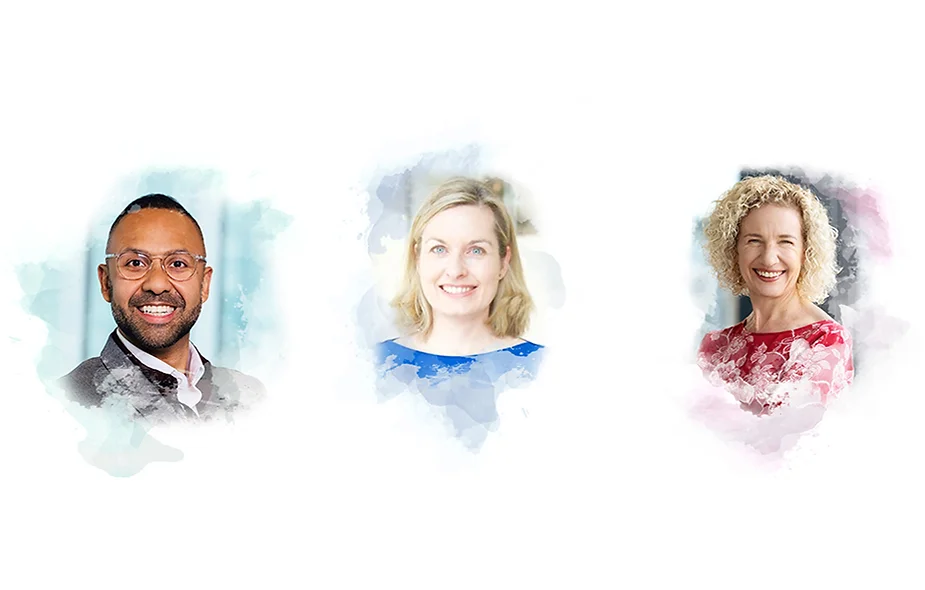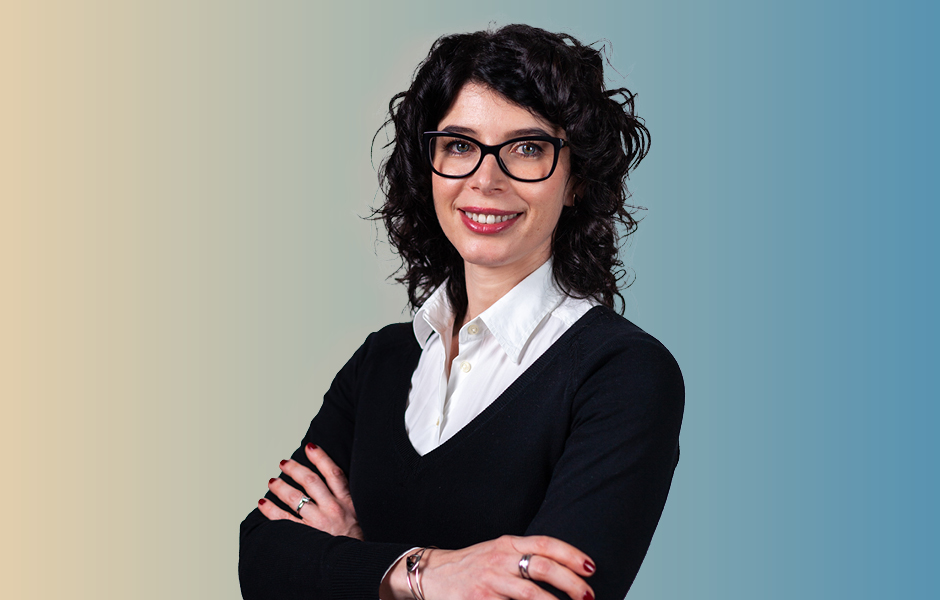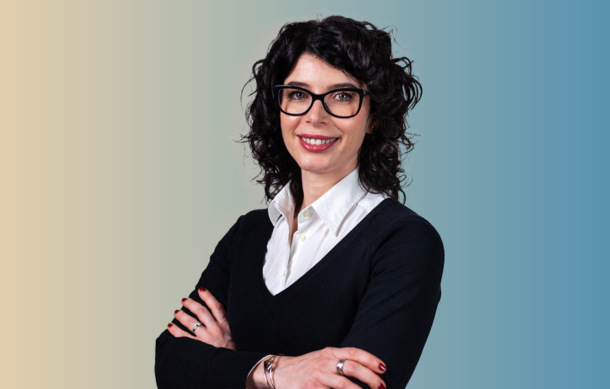As Diversity, Inclusion, and Belonging (DI&B) become an increasingly important and recognised focus, we reflect on the progress being made within the pharmaceutical industry to improve both internally and externally for the benefit of employees and patients alike. In this roundtable, we hear from three industry thought leaders spearheading this change, as they share their thoughts on the importance of championing diversity as well as their vision for pharma’s future.
Interview with Uzair Qadeer (Alexion), Stefanie Nickel (Sandoz), and Jennifer O’Lear (Merck kGaA)
What do you hope to achieve in your current role?
Qadeer: I want to strip traditional approaches to diversity programmes to the ground and rebuild them to drive true systemic change and help people unapologetically unleash their full potential. My personal hope is to evolve Alexion into a company where everyone feels a sense of belonging. I define belonging as a moment when every person feels appreciated and included because of their uniqueness, not despite it. This will also enable Alexion to become a magnet and incubator for diverse talent: a culture that harnesses diverse insights to fuel innovation for the patients we serve.
Nickel: As a physician in this role, it is important for me to understand the scientific evidence around Diversity & Inclusion (D&I) to effectively position it strategically and drive impact. Diversity is our reality as everyone is unique; equity often has a local and cultural context and inclusion is our shared opportunity because the need to belong is universally human. We want to build a workplace where everyone feels respected, heard, and valued; where we can all contribute to our full potential. Inclusion helps us leverage visible and invisible diversity to collaborate effectively, understand stakeholders’ and patients’ needs and drive innovation.
O’Lear: I see the role as a catalyst in any organisation. As we have >50,000 people in our organisation, it’s not inclusive if employees need to wait for my input; everyone needs to contribute and understand how D&I creates value. My team and I bring expertise: what works, what doesn’t? How can we be more inclusive to people from marginalised or discriminated groups and embed inclusion in the organisation? We apply rigor to every possible channel of engagement. I want to create more diversity in our employee and leadership populations and help people adopt D&I perspectives so they can solve business problems not foreseen by the D&I office.
How do you create an internal culture of inclusion for all employees within your organisation?
Qadeer: It is a complicated and deeply personal process and should be built carefully to work with the existing corporate strategy, vision, and values. At Alexion, we have employees from cultures around the world and must customise our approaches for local purposes. As we design our programmes, they not only focus on creating conditions for all people to thrive in, but also on holding everyone accountable, from recruitment and talent management to team behaviours. Once we embed diversity into everything we do, DI&B will organically become an omnipresent cornerstone of our culture.
Nickel: By ensuring equity, specifically in the areas of gender balance in management, LGBTIQ+, disability, racial, and ethnic minorities. Each dimension has its own challenges and associated biases or stigmas that need to be addressed, both globally and in specific countries’ legal context. Together with our Employee Resource Groups, we involve leaders and associates in regular, dedicated workshops to learn and discuss together as we believe inclusion is an active and continuous dialogue. We also position inclusion practices in the business context, training leaders and employing inclusion tools and techniques to help our teams collaborate effectively.
O’Lear: Inclusion starts with awareness of difference. Corporate cultures have evolved valuing certain types of people; when someone different shows up, there can be an automatic reaction that they won’t succeed. This can mean people hide differences to fit in. When we raise awareness, we expand the thinking about who can meaningfully contribute. Employee Resource Groups play a role here, but also organisational tools such as personality or cultural assessments. The second element is working on the culture around idea generation and risk-taking. True inclusion is feeling comfortable being yourself at work, meaning different ideas will be heard.
What positive steps have been taken to improve diverse patient representation?
Qadeer: Representation of clinical trial participants should reflect the population affected by a disease; however, this isn’t always the reality. We have a clinical trial diversity ‘Tiger Team’ to address this gap. We want to look at multicultural, diversity-focussed digital marketing strategies and consult a diverse group of patients. We now have the right infrastructure in place: a world-class patient advocacy and insights organisation and goals around patient centricity. With our work, Alexion is well positioned to turbo-charge our journey for focussing on patient diversity.
Nickel: We are committed to improving access to and participation in clinical trials, using insights from patient communities in trial designs and exploring novel technology-enabled solutions. After successful completion of clinical programmes, we commit to registering new medicines in every country where patients have participated in trials. Where a medicine is registered and not commercially available, we commit to providing it to participants, ensuring treatment is uninterrupted.
O’Lear: As recently shared in TIME Magazine by Healthcare CEO, Dr. Belén Garijo, Merck is working to diversify representation in clinical trials. There are multiple aspects to address, from the efficacy of medicines in different populations, to the difficulty engaging with some diverse populations, to finally getting medicines to those who will benefit. This is why we endorse PhRMA’s principles on clinical trial diversity, reflect these in our internal D&I strategy, and embed them in our design and execution of our healthcare work.
Looking to the future, what areas do you hope to prioritise to improve diversity and inclusion across the industry?
Qadeer: Diversity and inclusion is still narrowly focussed on gender and ethnicity. Boxes are for shoes, not for people; we need to take people out of boxes and put them on intersecting spectrums. There needs to be a shift because DI&B is a social and business imperative. I hope for Alexion to be an example within the industry, inspiring bolder approaches and ushering in systems designed to help people thrive equally. This will require non-conformist thinking. We have an internal “Diversity, Inclusion, and Belonging Network”, our D&I innovation engine, which is building a DI&B world, not as it always has been, but as it should be.
Nickel: In the healthcare industry we have a deep appreciation and commitment to scientific evidence on the clinical side. I would love to see us leverage scientific insights to be more effective in defining and implementing interventions that drive equity and inclusion. Evidence assessments have provided valuable insights for us into training impact, interventions driving gender balance, social and cognitive factors that enable worker performance, effective collaboration, and an innovation climate. I think we have both the opportunity and obligation to generate evidence where none exists by embracing control-groups, randomisation, and considering endpoints and effect size to help us understand causality and impact.
O’Lear: Amongst the prominent discussions about ethnicity this year, the situation for many Merck employees and patients has been more critical than we were aware. Discrimination can be hard to pinpoint, but its effects are so far-reaching that we must take more consequent action. Similarly, even with large efforts to drive gender parity and equity, we are not making fast progress. So, the next years will be about digging deeper into the issues and barriers. Our societies and companies will need to drastically change to become truly inclusive and benefit from the true diversity of perspective and thought available.






